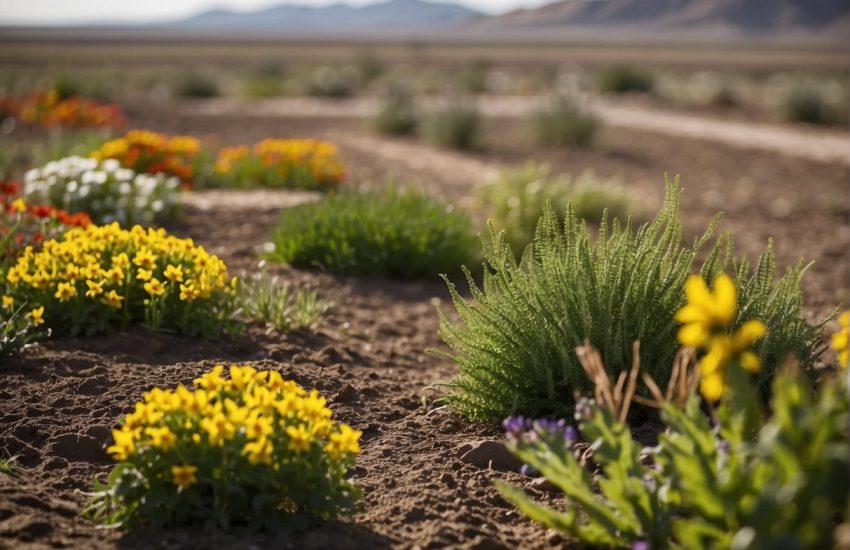What Hardiness Zone is Iowa?
Understanding the hardiness zone of a location is crucial for gardeners and farmers, as it guides them in choosing the most suitable plants for their climate conditions. In the United States, the USDA Plant Hardiness Zone Map is the standard tool used for this purpose. For the state of Iowa, this map provides valuable insights into the local gardening climate, allowing for informed decisions on plant selection that are vital for a successful harvest.
Understanding Plant Hardiness Zones
Plant hardiness zones are crucial for gardeners and growers to determine the ideal plants for their locale, reflecting the average annual minimum temperatures in a location, delineated by 10-degree Fahrenheit increments.
Role of USDA Plant Hardiness Zone Map
The USDA Plant Hardiness Zone Map serves as a fundamental reference for understanding which plants are most suitable for a given region’s climate. The United States Department of Agriculture has divided North America into zones based on the average annual extreme minimum temperature. This assists in selecting plants that are most likely to thrive within specific zones.
Understanding Half Zones
Within the general hardiness zones, the USDA further identifies “half zones”, indicated by the suffix “a” or “b”. These half zones represent a 5-degree Fahrenheit difference within a 10-degree zone. For example, a 4a zone is 5 degrees colder than a 4b zone. This granular categorization helps refine planting decisions even more precisely.
Iowa’s Climatic Conditions

Iowa’s distinct climatic characteristics significantly shape gardening practices within the state. The region’s climate, influenced by its location, elevation, and terrain, causes variations in winter temperatures that gardeners must account for.
Impact of Climate on Gardening
The climate in Iowa is classified as humid continental, typified by sizeable seasonal temperature differences, with hot summers and cold, often frigid winters. This categorization is essential for gardeners, as it dictates the types of plants that can thrive. Weather stations across Iowa, including those in Ames, help track climatic variations to inform gardening strategies, ensuring plants are suitable for the local conditions.
Winter Temperature Variations
During winter, Iowa experiences temperature extremes that fall within USDA hardiness zones 4b to 6a. The most frigid temperatures occur in the northern parts of the state, where readings can plummet to around -20˚F, largely due to higher elevations and the influence of terrain on weather patterns. These winter temperature variations influence plant dormancy and survival, thereby affecting the success of perennials, shrubs, and trees planted in gardens throughout Iowa.
Gardening in Iowa

In Iowa, gardeners and growers must select plants that are suitable for the climate defined by the USDA Hardiness Zones, with the state encompassing zones 4-6. Being aware of these zones is crucial for successful gardening, particularly when cultivating key crops such as corn and soybeans, which are staples in Iowa’s agriculture.
Selecting the Right Plants for Iowa’s Zones
For those gardening in Iowa, it is essential to choose plants that can thrive within the local climate zones. Iowa spans several plant hardiness zones; the northern regions fall into Zone 4, while the central to southern parts of the state are categorized in Zone 5 and even Zone 6 in some areas. This information is particularly pertinent for perennial plants, which must withstand the average annual minimum winter temperatures.
Growers should focus on species capable of enduring the colder temperatures found in Zone 4, such as some varieties of conifers, and robust perennials that can withstand chilly winters. Conversely, areas in Zone 6 accommodate a broader range of plants, including some that are less tolerant of severe cold. The Iowa Interactive USDA Plant Hardiness Zone Map is an invaluable tool, providing detailed insights into the specific zones of different locales.
Gardening Guide for Iowa Growers
For growers in Iowa, being effective in crop production involves a strategic approach to planting and maintenance. Corn and soybeans, two of Iowa’s major agricultural products, require specific planting times and soil conditions to yield optimal harvests. Corn, ideally suited for Iowa’s soil and climate, should be planted in the spring after the last frost to avoid cold damage. Soybeans are also planted in the spring but can tolerate a wider planting window due to their adaptability.
Iowa gardeners can achieve bountiful gardens by utilizing growing zones as a guide for planting schedules and plant selection. A new version of the plant hardiness zone map can provide updated information and assist in cultivating a successful garden or farm. Proper crop management techniques, such as crop rotation and timely irrigation, further ensure plant health and productivity, which are quintessential aspects of gardening and large-scale production in Iowa.
Navigating the Zone Map
Iowa gardeners and agriculturists rely on accurate plant hardiness zone information to make informed decisions about planting. The zone map is a crucial tool for this purpose, offering a detailed breakdown of regional climate variances using GIS data, and enabling users to find their local zone by zip code.
Using GIS Data for Precision
Geographic Information Systems (GIS) provide granular detail to plant hardiness zone maps. This technology takes into account the various geographic and climatic factors that can affect plant survival. Users in Iowa can trust that the GIS-based maps give a more accurate representation of the subtle climatic differences within the state, ensuring they can select the most appropriate plants for their specific locale.
Finding Your Local Zone by Zip Code
Understanding plant hardiness zones down to a local level is simplified by zip code look-up tools. Gardeners can easily determine their exact planting zone by entering their zip code on relevant gardening websites. This method gives gardeners a quick and accurate regional zone assessment, circumventing the need to interpret complex GIS data themselves. For example, new plant hardiness zone maps provide a user-friendly interface for anyone researching the zones specific to any area within Iowa.
Resources and Tools

Navigating the U.S. Department of Agriculture’s (USDA) Plant Hardiness Zone Map is essential for gardeners and researchers alike in Iowa. This section will guide through accessing the most recent map and understanding its applications based on the latest research.
Accessing USDA Zone Map Downloads
The USDA in collaboration with Oregon State University’s PRISM Climate Group offers comprehensive USDA Plant Hardiness Zone Map downloads. Gardeners can easily access and download these maps, allowing them to determine the best plants for their location. The map is divided into 10-degree F zones, including 5-degree F half zones for more precision. To download the map, users can visit the map’s official website; maps are available in various formats and resolutions to cater to different needs, such as high-resolution images for presentations or simple graphics for quick reference.
Recent Updates and Research
The USDA Agricultural Research Service periodically updates the Plant Hardiness Zone Map to reflect changes in climate patterns. In fact, a new version of the map was released recently, which is the first significant update since 2012. These updates are vital as they provide the public and researchers with the most current data, ensuring that the plant selections are made with the utmost accuracy. The development of the map involved extensive research and used temperature data from over 8,000 stations across the United States, making it a truly national effort.
Frequently Asked Questions
Understanding plant hardiness zones is crucial for gardeners and agricultural professionals to select the right plants for their area. These zones are determined based on the local climate, specifically the average annual extreme minimum temperature.
How do I determine the plant hardiness zone for a specific location in Iowa?
To find the plant hardiness zone for a specific location in Iowa, individuals can refer to the 2023 USDA Plant Hardiness Zone Map. This map divides regions based on their temperature patterns, aiding in the selection of suitable plants.
Which areas of Iowa fall under hardiness zone 4?
The northern border of Iowa is primarily categorized under hardiness zone 4. This means the region can support plants that tolerate cold down to average annual extreme minimum temperatures between -30 to -20 degrees Fahrenheit.
What are the hardiness zones for major cities in Iowa, such as Des Moines, Cedar Rapids, or Sioux City?
Des Moines, Cedar Rapids, and Sioux City mostly fall within hardiness zone 5. In this zone, the average annual extreme minimum temperatures typically range from -20 to -10 degrees Fahrenheit, affecting plant selection and growing seasons.
Are there any portions of Iowa that are classified within zone 5 for planting?
Yes, a significant portion of Iowa is classified within zone 5. As noted in a news release about the Iowa hardiness zone map, much of the state now is considered Zone 5, suitable for a different set of plant species compared to zone 4.
How does the hardiness zone affect gardening and agriculture in Iowa?
The plant hardiness zone in any area of Iowa influences which plants are most likely to thrive there. It informs gardening choices and crop selection in agriculture, ensuring the sustainability of plantings through Iowa’s winters.
Can you provide a climate zone map that shows the various planting regions throughout Iowa?
For a visual representation of the different plant hardiness zones across Iowa, individuals can view the Iowa Interactive USDA Plant Hardiness Zone Map. This interactive tool offers detailed insights on the specific zones throughout the state.


